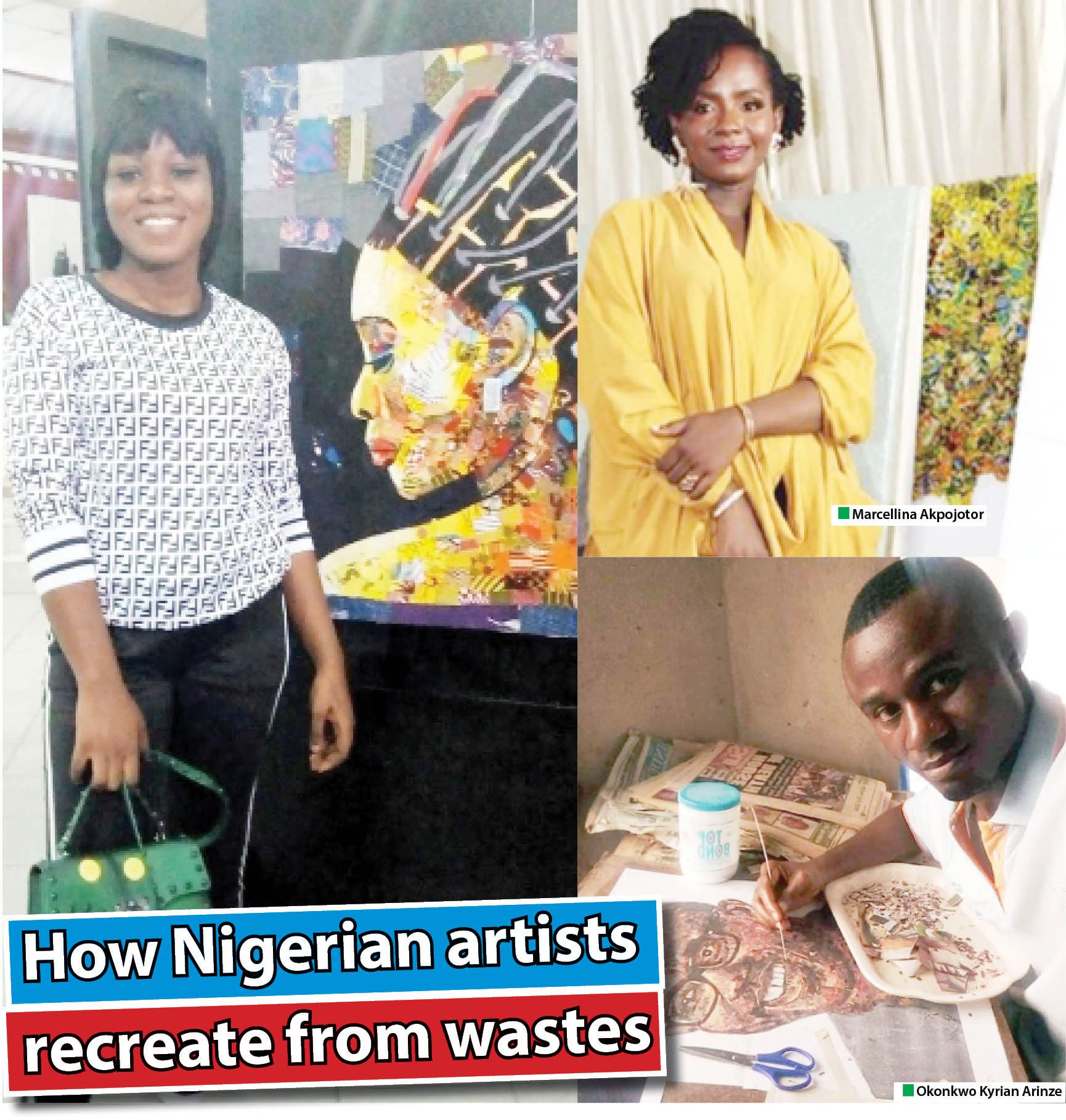How Nigerian artists recreate from wastes
Art is evolving and so changes with time, taste, and trends. The challenges for Nigerian artists are how to remain relevant and retain their identity. Unlike other professions, formal education is not compulsory to become an artist as several painters, sculptors built on their innate talent and passion to carve a niche for themselves in […]

Art is evolving and so changes with time, taste, and trends. The challenges for Nigerian artists are how to remain relevant and retain their identity. Unlike other professions, formal education is not compulsory to become an artist as several painters, sculptors built on their innate talent and passion to carve a niche for themselves in the art industry.
The desire to create a unique identity has made them innovative, thereby exploring a hitherto abandoned method to making a name as they move from painting on canvas to charting unexplored areas by painting using recyclables, fabrics, and other materials.
- South-East crisis: Ebubeagu fails to roar, 62 days after formation
- June 12: Peaceful protests, rallies rock states
Okonkwo Kyrian Arinze is among Nigerian artists benefiting from the country’s diversity. The Anambra State-born artist was able to capture the attention of America’s popular musician, Akon, with a portrait made from old papers.

Arinze on his Instagram account, Kyrian_Arinze, said the portrait was made from cut-out bits from old newspapers. The American superstar later replied to his post thanking him, “This is cool, the product of recycling,” he said having tagged Arinze.
Arinze has done several works from old newspapers and takes pride in transforming old newspapers into masterpieces. He has done portraits of several prominent personalities including former President Goodluck Jonathan and former Peoples Democratic Party Vice-Presidential candidate, Peter Obi.
Unlike Arinze, Abandy Faith is transforming waste fabrics into masterpieces. The multimedia fabric collage artist works 100 per cent with fabrics. The graduate of Fine Art and Design from the University of Port Harcourt said on her website that she was inspired by her love for the environment. The Delta State-born artist said her works encourage recycling as a form of art.
In an interview with Fabwoman, she said she started using fabrics during her final year in school but met an artist who taught her how to use fabric to make portraitures and she had never stopped since then.
“Waste is everywhere and I felt this is my little way to contribute to a greener environment healthy enough for our kids to live,” she told the online medium.
She said she gathers the wastes from fashion shops and markets, and makes good use of them instead of allowing the artisans to trash them.
“I once cut off the inner lining of my sister’s cloth because it just had the perfect colour for the eyes on one of my projects,” she said, adding that that was the most mischievous thing she did for the fabric.
She has used Ankara fabrics in most of her works saying her choice was due to the fabrics vibrant colours, “that can be seen from miles away and it also has intricate designs on them projecting the rich African culture,” she said in the interview.
Another artist turning waste fabrics into wealth is Marcellina Akpojotor. In a painting, posted on her Instagram page, marcellina_akpojotor, to celebrate Children’s Day, she showed her uniqueness using fabrics and acrylic on canvas. The celebrated artist has also featured on CNN African Voices ‘Change Makers’ as her works get her international ovations. In an interview with BBC, she said she was inspired by stories, families, friends and life stories, adding that she got her fabrics from wastes materials at fashion houses.
She is married to Patrick Akpojotor, another artist blazing the trail in architecture and geometry fragment cubist.
